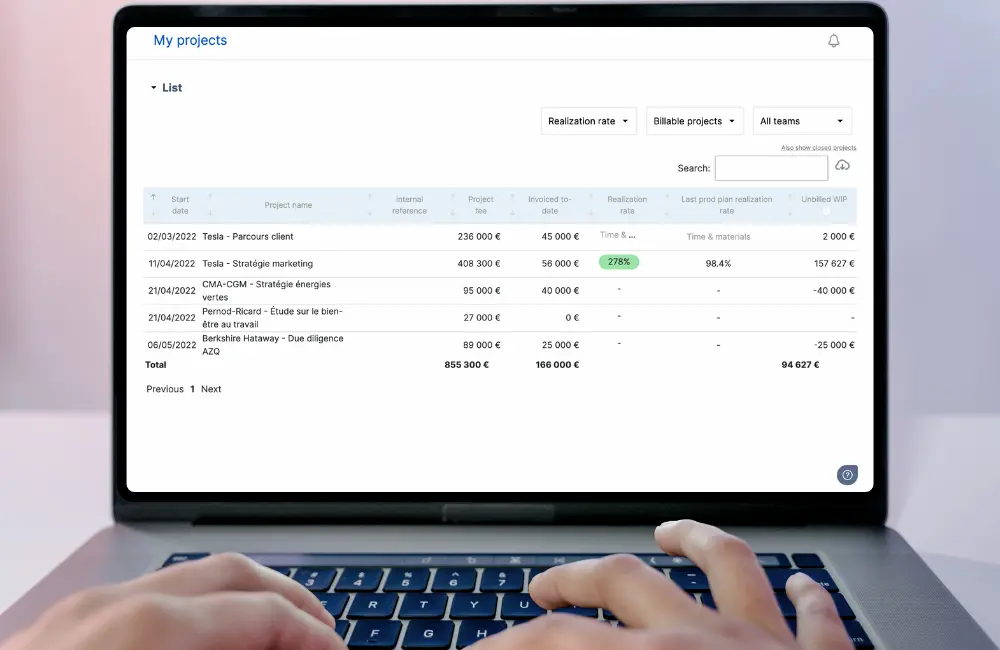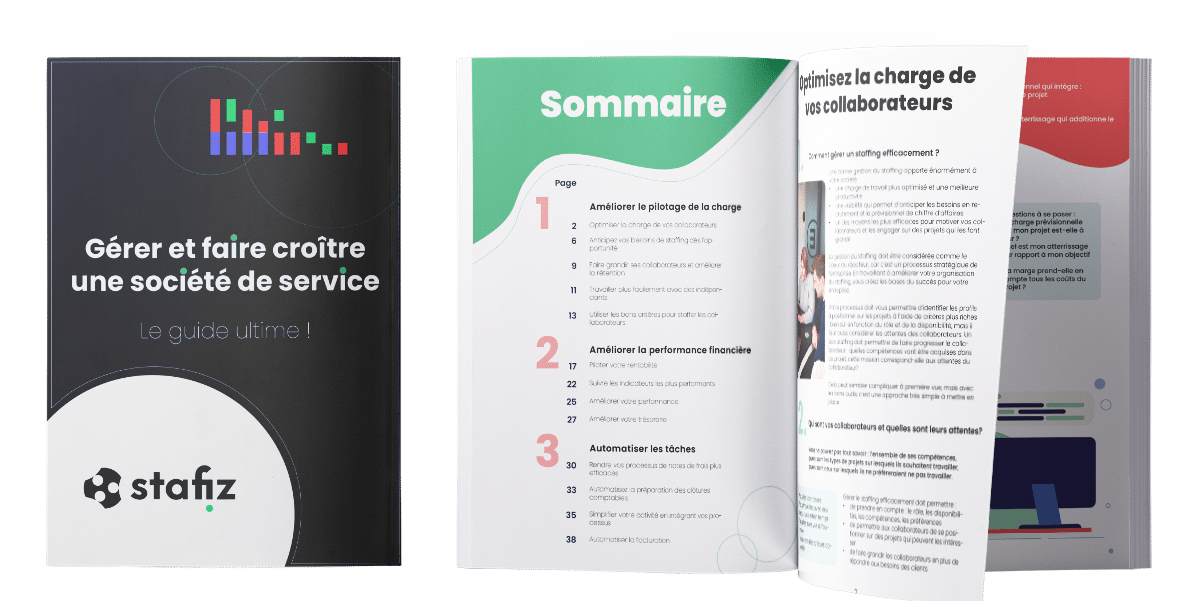Utilization rate vs Achievement rate

Foreword
Every professional services organization should keep a close eye on its utilization rate. It's a good way to understand how productive an individual or team is.
The utilization rate is a key indicator of productivity in service companies. They reflect the percentage of time an individual or team spends working on billable projects or tasks compared with the total time available.
Monitor utilization rate on a regular basis allows an organization to understand the productivity of its employees.
Budget monitoring of projects, in anticipation
See Stafiz in action in 2 minutes
Calculation of the utilization rate and realization
Utilization rate
Here's how Calculate utilization rate :
All hours invoiced in a period / total hours workable over the period
For example, if an employee has logged 30 billable hours in a week, and the number of workable hours in a week is 40 hours in your company, then the utilization rate is 30 / 40 = 75%.
Now, this method is not always accurate because:
- an employee can work more than 40 hours per week,
- It does not provide any information about how the non-billable time was used.
Stafiz is a solution for resource planning which allows you to manage employee schedules, optimize utilization rate, and improve your performance!
Completion rate
Here is the completion rate:
Billable hours of a period / total number of hours recorded by the employee (billable + non-billable).
The completion rate gives the fair billable performance of this employee, regardless of the number of hours he or she has spent over the period. And if you use the right software to track time, you'll be able to better understand how your employees are using their time.
Discover the completion rate in video:

The importance of recording non-billable hours
There are many reasons for recording non-billable hours in a professional services organization: the employee may be working on a business proposal, or on an internal project.
In both cases, it is important to have data on your non-billable time. Because it would be a mistake to note that its completion rate is low and to conclude that its time is not optimized.
In many cases, business activities and internal projects have high returns.
To calculate rates, time tracking is essential
Make sure that you are using software that helps you track times accurately and track your team's productive results.
Accurately recording and reviewing the right reports is the first step. The next step is to optimize your resources, which will be the subject of another article.
In Stafiz, we like to present a very useful KPI: we call it the production rate.
It takes everything into account (past and future time, expenses) and tells you whether you can anticipate an over- or under-performance of the project. Here's how we calculate it:
- Project Expenses / [Actual and Future Work Time Spent on the Project x Daily Rate].
Expense management with Stafiz
Of course, the denominator takes into account the different daily rates of each member involved in the project.
So, if you sold the project at the exact value of each team member's scheduled time, multiplied by their daily rates, you expect to achieve a 100% production rate.
What other elements are you looking at?
Let's take an example:
- You have sold a project of €100,000, and plan for a junior to work 60 days at €1000/day
- a senior 20 days at 1500 €/day
- and a director 5 days at 2000 €/day
- = (60 x 1000 + 20 x 1500 + 5 x 2000 = 100,000)
- So in your plan, the production rate is 100%.
But, let's say you're a month away from the project, and now you expect that:
- The junior will spend 70 days
- Senior 25 days
- and the director 6 days
- Now the value of your production is (70 x 1000 + 25 x 1500 + 6 x 2000 = 119,500)
- The production rate is therefore 83.7%.
This does not mean that your margin is negative, as your daily rates can include a significant margin compared to the actual cost of your employee. But this means that you are underperforming compared to your initial plan, by 16.3%.
You need to find ways to speed up the project or justify a price increase to your client.
It also happens that during a project, your client requests additional services. In this case, you should review the original plan, adjust the package sold, and factor this into your performance analysis.
In Stafiz, you can do this by adding as many new "production plans" as you need.
Analyze your projects to increase profitability
There are many reasons why a project becomes unprofitable:
- The costs of doing business have been underestimated
- expenses were not included in the margin calculation
- or you are simply stuck on the project and spend more time on it
In some cases, the opposite is true, and you'll end up being much more profitable than you expected. The most important aspect of all this is to ANTICIPATE.
Analyze the performance of your projects
Learn how to plan, track, and evaluate your projects effectively with our comprehensive guide to project tracking.
You need reporting tools to give you real-time visibility of your project's finances. This will help you set the right bid price, and give you enough time to react and make decisions. This will help you speed up the project or reduce costs where possible.

What other elements are you looking at?
A solution from resource planning helps you optimize your employee load and improve your profitability. To learn more about resource planning management in Stafiz and how to improve retention, read our e-book.
